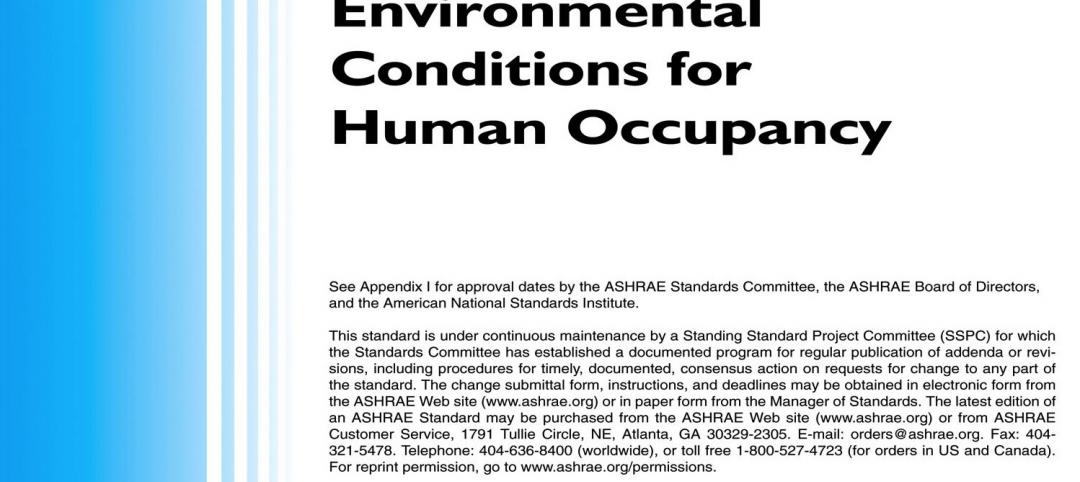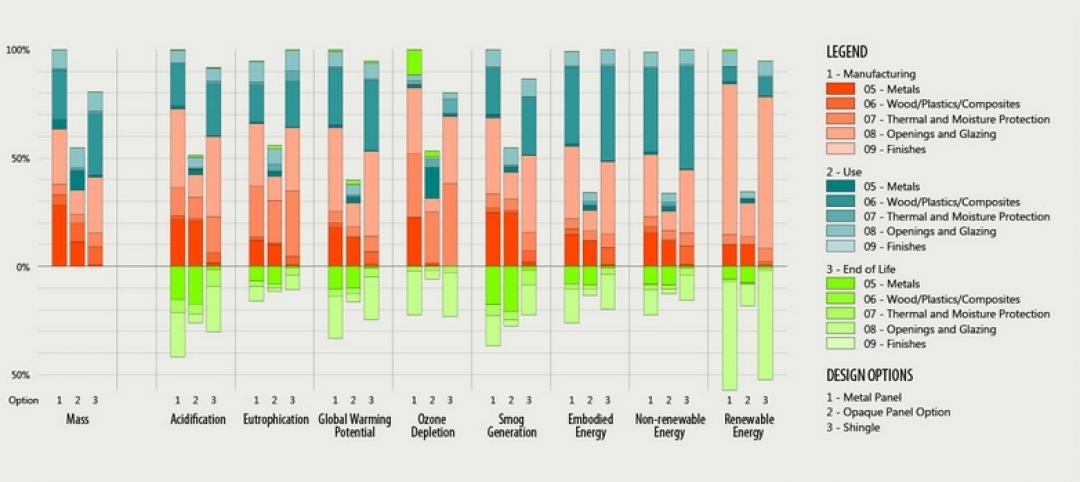ASHRAE recently approved publication of its highly anticipated standard to reduce the risk of airborne infectious aerosol transmission in buildings.
ASHRAE Standard 241, Control of Infectious Aerosols establishes minimum requirements to reduce the risk of disease transmission by exposure to infectious aerosols in new buildings, existing buildings, and major renovations. Infectious aerosols are tiny, exhaled particles that can carry pathogens that cause infections or disease.
Infectious aerosols are so small that they can remain in the air for long periods of time. Use of this standard could reduce exposure to the SARS-COVID-2 virus, which causes COVID-19, the flu virus, and other pathogens.
Standard 241 provides requirements for many aspects of air system design, installation, operation, and maintenance. It includes an infection risk management mode (IRMM) that enhances the normal mode of operation via engineering controls to reduce infectious aerosol exposure of occupants. It also provides a Requirements for Use of Filtration and Air Cleaning Technology section that outlines how to draw in additional outdoor air to ventilate a building in an energy-efficient, cost-effective manner.
More on the standard from ASHRAE:
Important aspects of the standard include:
- Infection Risk Management Mode – Requirements of Standard 241 apply during an infection risk management mode (IRMM) that applies during identified periods of elevated risk of disease transmission. AHJs (Authorities Having Jurisdiction) can determine when the enhanced protections of Standard 241 will be required, but its use can also be at the discretion of the owner/operator at other times, for example, during influenza season. This aspect of Standard 241 introduces the concept of resilience – ability to respond to extreme circumstances outside normal conditions - into the realm of indoor air quality control design and operation.
- Requirements for Equivalent Clean Airflow Rate – Other indoor air quality standards, including ASHRAE Standards 62.1, 62.2, specify outdoor airflow rate and filtration requirements to control normal indoor air contaminants. Standard 241 breaks new ground by setting requirements for equivalent clean airflow rate, the flow rate of pathogen free air flow into occupied areas of a building that would have the same effect as the total of outdoor air, filtration of indoor air, and air disinfection by technologies such as germicidal ultraviolet light. This approach allows the user of the standard flexibility to select combinations of technologies to comply with the standard that best satisfy their economic constraints and energy use goals.
- Requirements for Use of Filtration and Air cleaning Technology – Dilution of indoor air contaminants by ventilation with outdoor air can be an energy intensive and expensive way to control indoor air quality. Standard 241 provides extensive requirements for use of filtration and air cleaning to effectively and safely achieve meet equivalent clean airflow requirements efficiently and cost effectively. These include testing requirements to establish performance and to demonstrate that operation does not degrade indoor air quality in other ways, for example by elevating ozone levels.
- Planning and Commissioning – Standard 241 provides assessment and planning requirements culminating in the development of a building readiness plan, a concept carried over from the work of the ASHRAE Epidemic Task Force. It also describes procedures for commissioning systems to determine their installed performance.
The standard is available for presale in the ASHRAE Bookstore.
Related Stories
| Dec 18, 2013
ASHRAE publishes 2013 thermal comfort standard
Major revisions for design and measurement of comfortable spaces are included in a newly published ASHRAE 2013 thermal comfort standard.
| Dec 4, 2013
Five U.S. cities leading on climate change initiatives
Houston, Salt Lake City, Miami, New York, and Los Angeles are five cities that are leading the way on preparing for climate change and extreme weather, according to a Center for American Progress report.
| Dec 4, 2013
Meet the 'world's greenest building': One Angel Square
The 500,000 sf, 14-story One Angel Square in Manchester, England, is being promoted as "the most environmentally-friendly building in the world."
| Dec 3, 2013
Architects urge government to reform design-build contracting process
Current federal contracting laws are discouraging talented architects from competing for federal contracts, depriving government and, by inference, taxpayers of the best design expertise available, according to AIA testimony presented today on Capitol Hill.
| Nov 27, 2013
ASHRAE data center standard open for public review
Standard 90.4P, Energy Standard for Data Centers and Telecommunications Buildings, is being developed in response to requests to recognize the energy performance profiles unique to data centers.
| Nov 27, 2013
ASTM issues revised standard on phase I environmental site assessments
ASTM has issued revised standard ASTM E1527-13 that governs phase I environmental site assessments.
| Nov 22, 2013
Kieran Timberlake, PE International develop BIM tool for green building life cycle assessment
Kieran Timberlake and PE International have developed Tally, an analysis tool to help BIM users keep better score of their projects’ complete environmental footprints.
| Nov 20, 2013
How LEED and Green Globes stack up
An analysis of the strengths and weaknesses of the Green Globes rating system and LEED standards puts LEED ahead, but doesn’t discount the merits of Green Globes.
| Nov 14, 2013
First LEED v4 certified project garnered by Beijing furniture showroom
Haworth’s showroom in Beijing’s Parkview Green building has been recognized as the world’s first certified LEED project under the USGBC’s new LEED version 4 beta program.
| Nov 14, 2013
GSA asks for input to help study energy-efficient technologies on its buildings
The General Services Administration has posted a request online, asking those in industry, academia and nonprofits for information on green building technologies.














